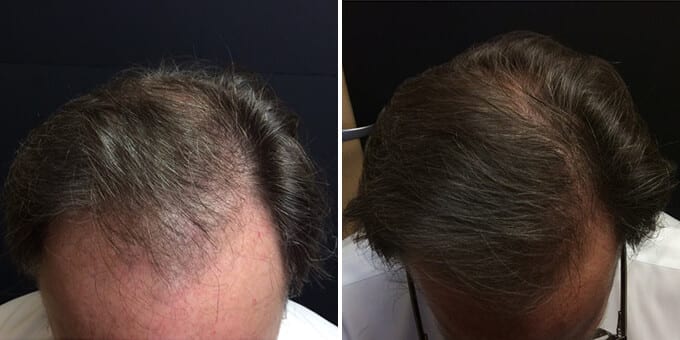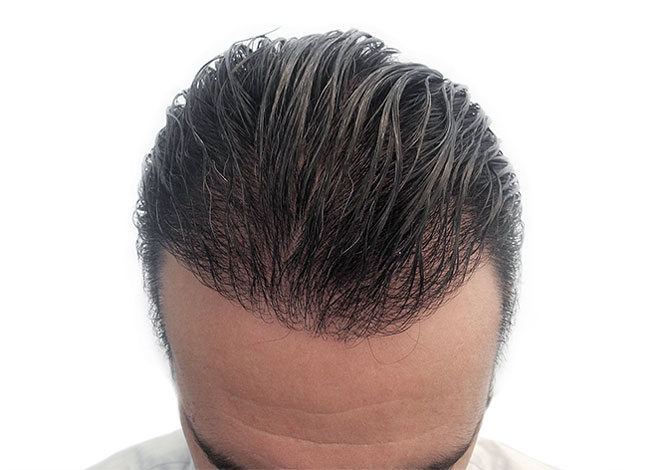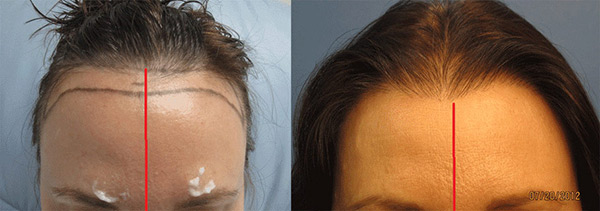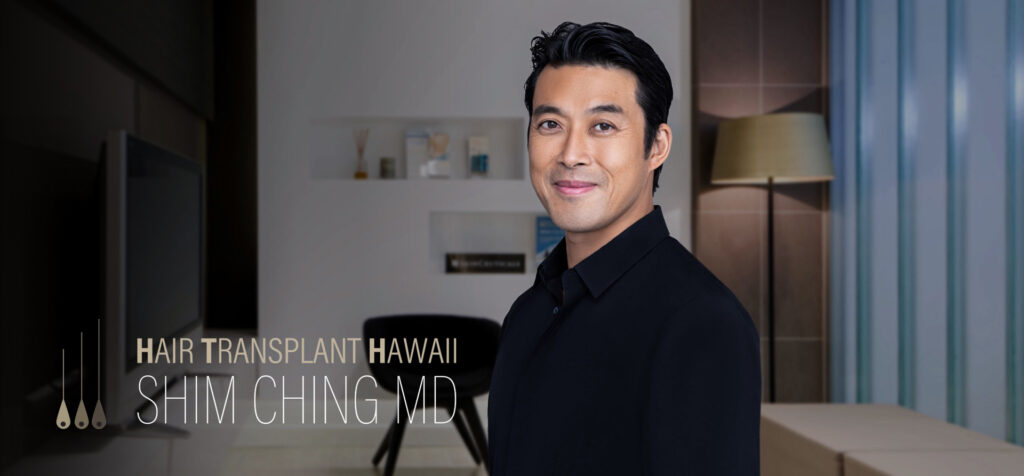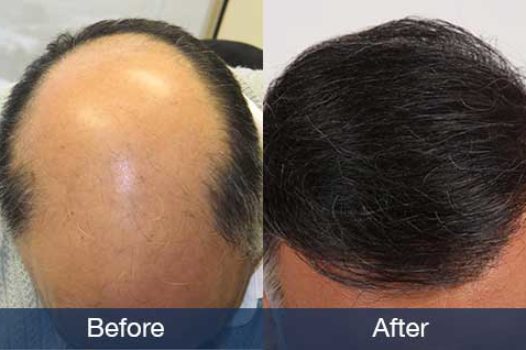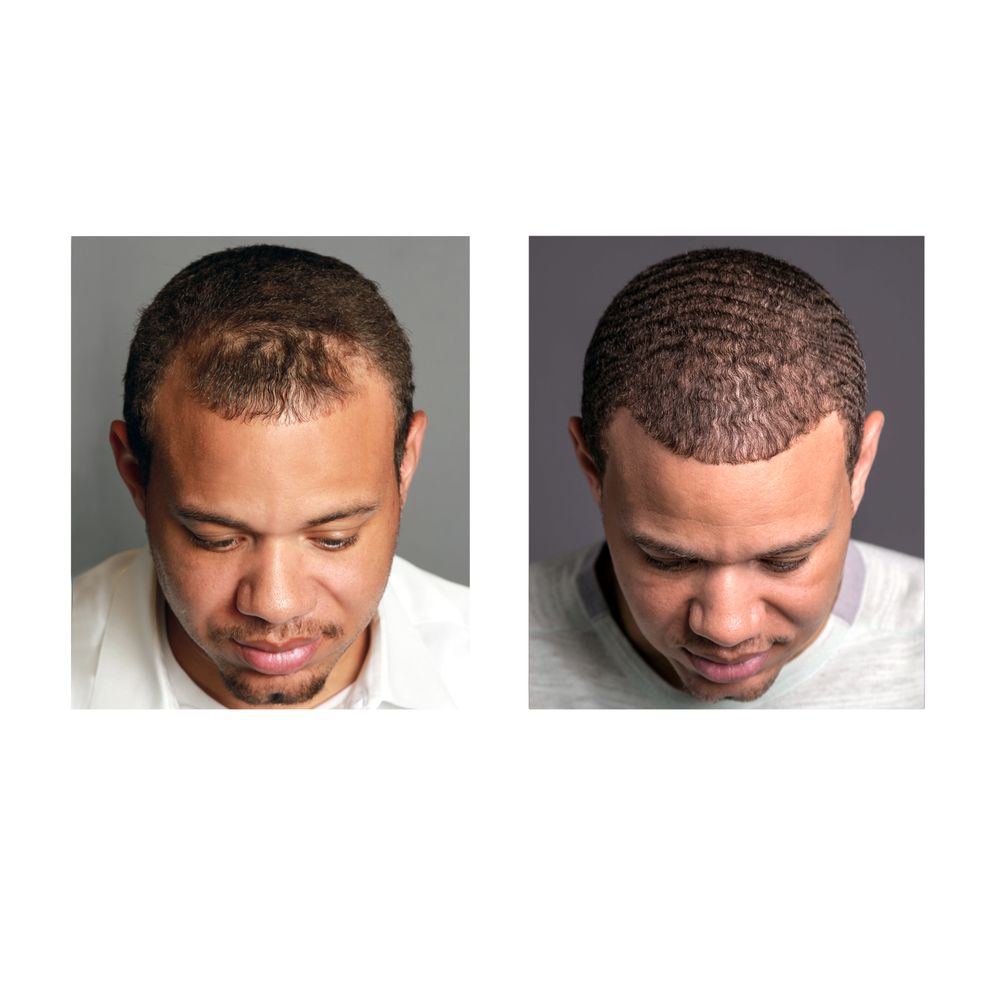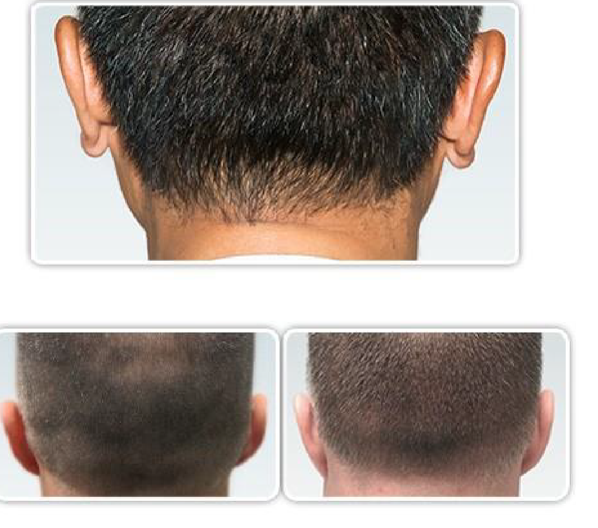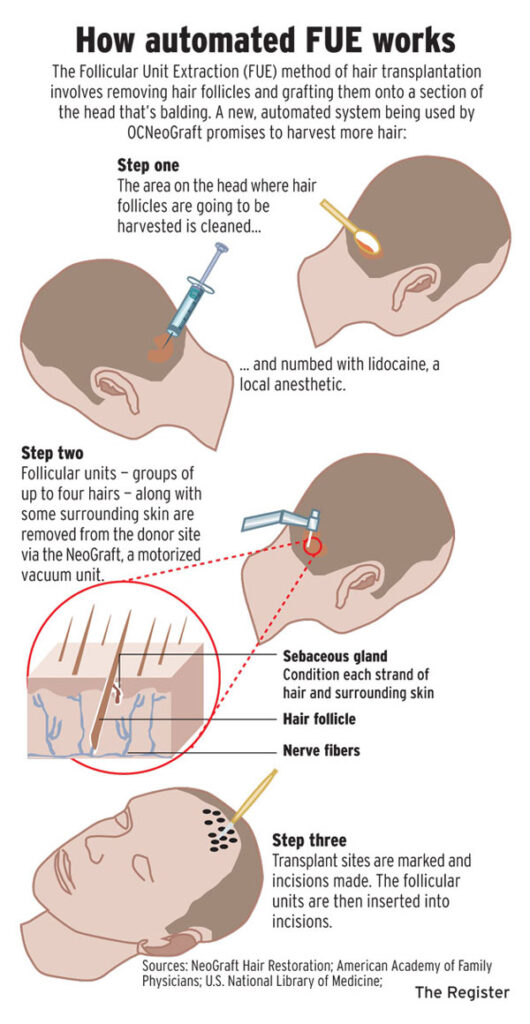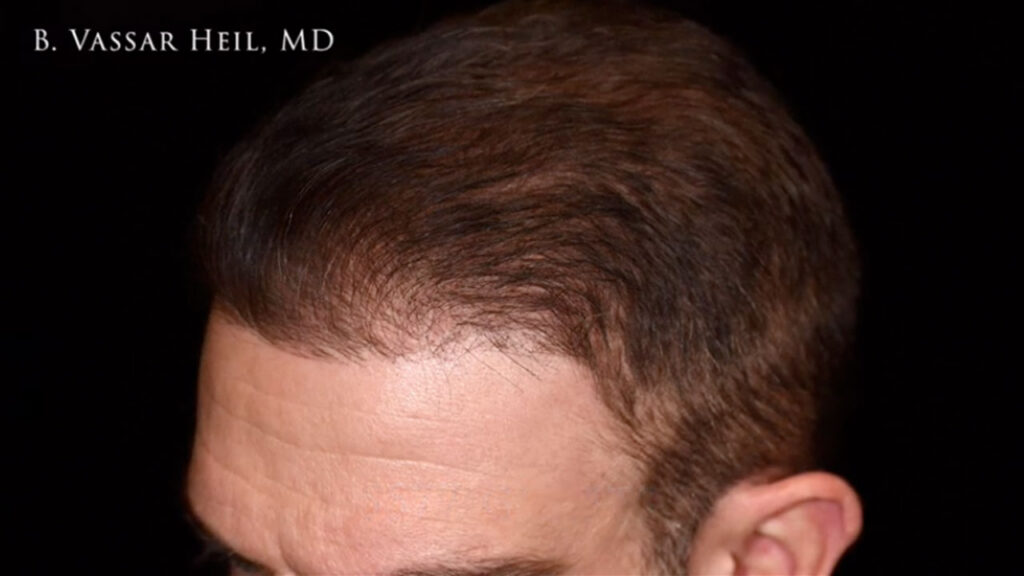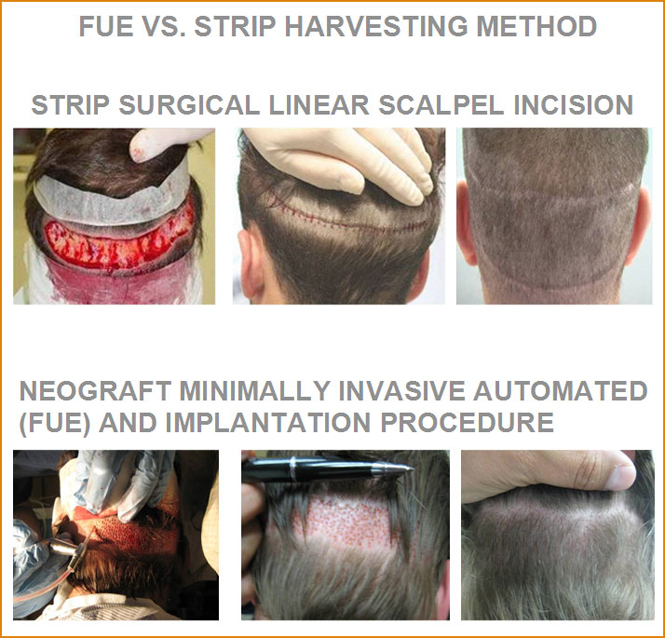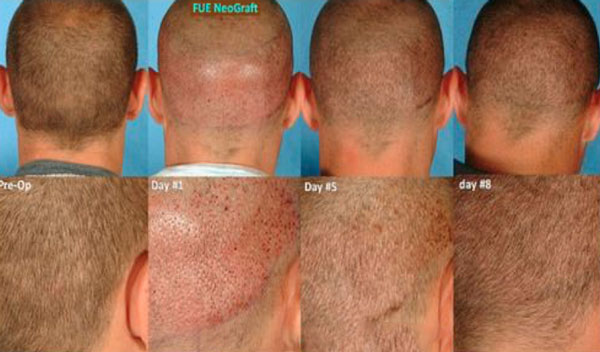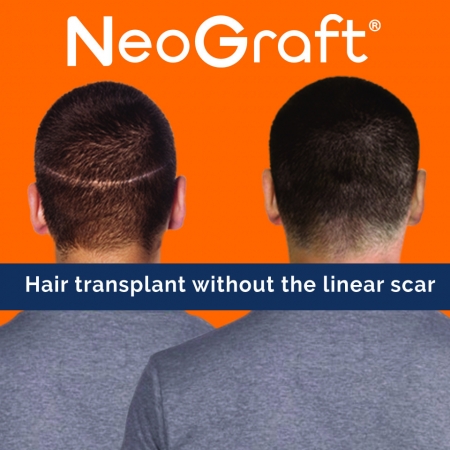If you’ve been struggling with hair loss and are looking for a solution in the Virginia Beach area, then look no further. The answer to your hair restoration needs lies in the expert hands of the professionals at Hair Transplant Virginia Beach Virginia. With their state-of-the-art techniques and years of experience, they have helped countless individuals regain their confidence and a full head of hair. Say goodbye to thinning hair and hello to a new you, thanks to Hair Transplant Virginia Beach Virginia.

Benefits of Hair Transplant in Virginia Beach Virginia
Restores Hairline and Fullness
If you are struggling with hair loss and thinning hair, a hair transplant in Virginia Beach, Virginia can help restore your hairline and fullness. Hair transplant procedures are designed to relocate healthy hair follicles from donor areas to areas experiencing hair loss. By doing so, the transplanted hair can fill in bald spots, create a more defined hairline, and give you a fuller head of hair.
Permanent Solution for Hair Loss
Unlike temporary solutions such as hairpieces or topical treatments, a hair transplant in Virginia Beach, Virginia offers a permanent solution for hair loss. The transplanted hair follicles are typically resistant to the effects of DHT (dihydrotestosterone), the hormone responsible for male and female pattern baldness. This means that once the transplanted hair starts to grow, it is unlikely to fall out again.
Boosts Self-Confidence
Hair loss can greatly impact a person’s self-esteem and confidence. As such, undergoing a hair transplant in Virginia Beach, Virginia can boost your self-confidence and improve your overall quality of life. With restored hair, you may feel more comfortable in social settings, professional environments, and even in your personal relationships.
Improves Appearance
Hair is an important aspect of our appearance, and hair loss can drastically change our overall look. A hair transplant in Virginia Beach, Virginia can help improve your appearance by filling in thinning areas, creating a more youthful and vibrant look. Whether you are experiencing a receding hairline, thinning crown, or overall hair loss, a hair transplant can help you achieve a more aesthetically pleasing appearance.
Low Maintenance
One of the great benefits of a hair transplant in Virginia Beach, Virginia is that it requires minimal maintenance. Once the transplanted hair starts to grow, you can treat it just like your natural hair. You can shampoo, style, and even dye your transplanted hair without any restrictions. This low-maintenance aspect makes hair transplants a convenient and hassle-free option for individuals seeking a long-term solution for their hair loss.
Enhances Facial Features
A full head of hair can enhance your facial features and bring out your best features. With a hair transplant in Virginia Beach, Virginia, you can regain lost facial symmetry and balance. The transplanted hair can frame your face, soften harsh features, and even make you look more youthful. It’s amazing how a simple hair restoration procedure can have such a transformative effect on your overall appearance.
Natural Looking Results
Gone are the days of obvious and unnatural-looking hair plugs. Today, hair transplant techniques have significantly improved, providing patients with natural-looking results. Skilled hair transplant surgeons in Virginia Beach, Virginia ensure that the transplanted hair blends seamlessly with your existing hair, mimicking its texture, color, and direction of growth. The end result is a completely natural-looking head of hair that even the closest observer won’t be able to distinguish from your own hair.
Allows Hairstyling Freedom
With a hair transplant in Virginia Beach, Virginia, you can enjoy the freedom to style your hair as you please. Whether you want to try different hairstyles, experiment with different hair products, or simply run your fingers through your hair, you have the freedom to do so. The transplanted hair is permanent and behaves like your natural hair, giving you the opportunity to express your personal style with confidence.
No Side Effects
Hair transplant procedures in Virginia Beach, Virginia are generally safe and have minimal side effects. The most common side effects include temporary swelling, redness, and mild discomfort, which typically subside within a few days to a week. Serious complications are rare when the procedure is performed by an experienced and skilled hair transplant surgeon.
Minimal Recovery Time
Another advantage of a hair transplant in Virginia Beach, Virginia is the minimal recovery time associated with the procedure. Most patients can return to their regular activities within a day or two, although it’s recommended to avoid strenuous exercise and activities that may cause excessive sweating for a couple of weeks. The recovery process is generally smooth and well-tolerated, allowing you to get back to your routine in no time.
Choosing a Hair Transplant Clinic in Virginia Beach Virginia
Researching Different Clinics
When choosing a hair transplant clinic in Virginia Beach, Virginia, it’s important to do thorough research. Look for clinics that specialize in hair transplant procedures and have a reputable track record. Take the time to compare different clinics, their services, and their patient reviews.
Considering the Surgeon’s Experience
The experience of the surgeon is a crucial factor to consider when choosing a hair transplant clinic in Virginia Beach, Virginia. Look for surgeons who are highly experienced in performing hair transplant procedures and have a demonstrated track record of successful outcomes. A skilled and experienced surgeon will have the expertise to handle complex cases and deliver exceptional results.
Checking the Clinic’s Reputation
The reputation of the hair transplant clinic is an important factor to consider. Look for clinics in Virginia Beach, Virginia that have a positive reputation and are known for their high-quality services. Read online reviews, testimonials, and patient feedback to get a sense of the clinic’s reputation and the experiences of previous patients.
Reading Reviews and Testimonials
Reading reviews and testimonials can provide valuable insights into the experiences of previous patients. Look for testimonials from individuals who have undergone a hair transplant at the clinic you are considering. Pay attention to the overall satisfaction, the quality of care provided, and the results achieved.
Examining Before and After Photos
Before and after photos can give you a visual representation of the clinic’s work and the results they have achieved. Look for before and after photos of individuals with similar hair loss patterns and goals as yours. Assess the quality of the hair transplant and determine if the results align with your expectations.
Evaluating the Clinic’s Facilities
Visit the hair transplant clinic in Virginia Beach, Virginia, or request a virtual tour to evaluate the facilities and ensure that they meet your expectations. Look for clean, modern, and well-equipped facilities that prioritize patient comfort and safety.
Considering the Cost
While cost shouldn’t be the sole determining factor, it is an important consideration when choosing a hair transplant clinic in Virginia Beach, Virginia. Consider your budget and compare prices across different clinics. Keep in mind that the cost may vary depending on factors such as the extent of your hair loss, the number of grafts required, and the complexity of the procedure.
Scheduling Consultations
Scheduling consultations with potential hair transplant clinics is a crucial step in the decision-making process. During these consultations, you can discuss your hair loss concerns, ask questions, and assess your compatibility with the clinic and the surgeon. Use this opportunity to get a feel for the staff’s professionalism, their communication style, and their willingness to address your concerns.
Asking About Techniques and Technology
Inquire about the hair transplant techniques and technology used by the clinic. Experienced hair transplant clinics in Virginia Beach, Virginia utilize advanced techniques such as follicular unit extraction (FUE) and follicular unit transplantation (FUT) to ensure optimal results. Ask about the clinic’s approach to hair restoration and the technologies they employ to achieve natural-looking results.
Inquiring about Post-Procedure Care
Post-procedure care is an integral part of the hair transplant process. Inquire about the post-procedure care provided by the clinic in Virginia Beach, Virginia. Ask about the follow-up appointments, the instructions for hair care, and any additional support offered during the recovery period.

Understanding the Hair Transplant Process
Initial Consultation
The hair transplant process begins with an initial consultation at the hair transplant clinic in Virginia Beach, Virginia. During this consultation, the surgeon will assess your hair loss, evaluate your suitability for the procedure, and discuss your goals and expectations. This is an opportunity for you to ask questions, address any concerns, and establish a rapport with the surgeon.
Assessment and Planning
After the initial consultation, the surgeon will assess the extent of your hair loss and develop a personalized treatment plan. This plan will outline the number of grafts required, the donor area from which the hair follicles will be extracted, and the desired outcome.
Donor Area Preparation
Once the treatment plan is finalized, the donor area is prepared for the hair transplant procedure. The donor area is typically located at the back or sides of the head, where the hair is genetically resistant to DHT. The hair in this area is trimmed short for optimal extraction.
Hair Extraction
The hair follicles are extracted from the donor area using either the follicular unit extraction (FUE) or follicular unit transplantation (FUT) technique. In both techniques, the surgeon carefully removes individual hair follicles or strips of tissue containing multiple follicles.
Recipient Site Creation
Using meticulous techniques, the surgeon creates tiny incisions or recipient sites in the areas of hair loss. These recipient sites are strategically placed to ensure natural-looking hair growth and optimal coverage.
Graft Placement
The extracted hair follicles are then carefully placed into the recipient sites created by the surgeon. The surgeon pays close attention to the angle, direction, and density of the grafts to create a seamless and natural appearance.
Post-Transplant Care
After the hair transplant procedure, you will be provided with detailed post-operative instructions by the clinic in Virginia Beach, Virginia. These instructions will guide you on how to care for your transplanted hair, including things like washing and styling. It is important to follow these instructions to ensure proper healing and optimal results.
Follow-Up Appointments
Follow-up appointments are an essential component of the hair transplant process. These appointments allow the surgeon to monitor your progress, address any concerns or questions you may have, and ensure that your transplanted hair is growing as expected.
Results and Timeline
Hair transplant results are not immediate and require patience. It may take several months for the transplanted hair to grow and fully mature. The exact timeline varies from person to person, but most individuals start seeing noticeable results within six to twelve months after the procedure.
Possible Complications
Though rare, there can be potential complications associated with hair transplant procedures. These may include bleeding, infection, scarring, numbness, itching, swelling, temporary shedding, shock loss, unnatural appearance, hiccups in graft growth, thinning of the donor area, and the need for revision or additional procedures. It is important to discuss any concerns or potential complications with your hair transplant surgeon in Virginia Beach, Virginia before undergoing the procedure.
Different Hair Transplant Techniques Used in Virginia Beach Virginia
Follicular Unit Extraction (FUE)
Follicular Unit Extraction (FUE) is a popular hair transplant technique used in Virginia Beach, Virginia. In this technique, individual hair follicles are extracted from the donor area using a small punch tool and transplanted into the recipient sites. FUE allows for precise extraction and results in minimal scarring.
Follicular Unit Transplantation (FUT)
Follicular Unit Transplantation (FUT), also known as strip harvesting, involves the removal of a thin strip of tissue from the donor area. The strip is then dissected into individual follicular units, which are transplanted into the recipient sites. FUT allows for a larger number of grafts to be transplanted in a single session.
Direct Hair Implantation (DHI)
Direct Hair Implantation (DHI) is a technique that combines aspects of both FUE and FUT. With DHI, hair follicles are extracted individually using a special tool and are immediately transplanted into the recipient sites. This technique allows for precise graft placement and minimizes the time the grafts spend outside the body.
Robotic Hair Transplantation
Robotic Hair Transplantation uses advanced robotic technology to assist in the extraction and transplantation of hair follicles. The robot uses artificial intelligence and cameras to identify and extract the hair follicles. This technique provides precision and efficiency in the hair transplant process.
Platelet-Rich Plasma (PRP) Therapy
Platelet-rich plasma (PRP) Therapy is a hair restoration technique that involves injecting a concentrated solution of platelet-rich plasma into the scalp. PRP contains growth factors that are believed to stimulate hair growth and improve the quality of existing hair.
Stem Cell Hair Transplantation
Stem Cell Hair Transplantation is an innovative technique that combines hair follicle transplantation with the application of stem cells. The stem cells are believed to enhance the survival and growth of transplanted hair follicles, resulting in improved outcomes.
Micrografting and Minigrafting
Micrografting and Minigrafting are techniques that involve transplanting small groups of hair follicles, known as micrografts and minigrafts, respectively. These techniques are often used to create a natural-looking hairline and add density to areas of hair loss.
Scalp Reduction
Scalp Reduction is a surgical procedure that involves removing a section of bald scalp and stretching the adjacent hair-bearing scalp to cover the open area. This technique can be used in select cases where the scalp has sufficient elasticity for the procedure.

Preparing for a Hair Transplant in Virginia Beach Virginia
Finding a Suitable Surgeon
When preparing for a hair transplant in Virginia Beach, Virginia, finding a suitable surgeon is essential. Look for a surgeon who specializes in hair transplant procedures, has a good reputation, and is experienced in the specific technique you are considering.
Understanding the Procedure
Take the time to educate yourself about the hair transplant procedure you are planning to undergo. Understand the different techniques, the expected results, and the recovery process. This knowledge will help you set realistic expectations and make informed decisions.
Following Pre-Transplant Instructions
Prior to your hair transplant in Virginia Beach, Virginia, the clinic will provide you with specific pre-transplant instructions. These instructions may include guidelines on medications to avoid, dietary restrictions, and hair care routines. It is important to follow these instructions thoroughly to prepare your body and hair for the procedure.
Avoiding Medications and Supplements
Certain medications and supplements may interfere with the hair transplant process or increase the risk of complications. It is important to inform your hair transplant surgeon about any medications or supplements you are currently taking and to avoid any that may be contraindicated.
Quitting Smoking
Smoking can affect the healing process after a hair transplant and may reduce the success of the procedure. If you are a smoker, it is recommended to quit smoking several weeks prior to your hair transplant in Virginia Beach, Virginia. This will help optimize the healing process and promote better outcomes.
Taking Care of Scalp and Hair
In the weeks leading up to your hair transplant, it’s important to take good care of your scalp and hair. Avoid excessive heat styling, chemical treatments, and harsh hair products. Keep your scalp clean and moisturized to create an optimal environment for hair growth.
Arranging Transportation and Support
Hair transplant procedures are typically performed on an outpatient basis, but it’s important to arrange transportation to and from the clinic on the day of the procedure. Additionally, having a friend or family member accompany you can provide emotional support and assistance during the recovery period.
Planning for Time Off Work
Depending on the extent of the procedure and your occupation, you may need to plan for some time off work. Hair transplant recovery typically takes a few days to a week, during which you may experience mild discomfort and visible signs of the procedure. It’s important to discuss your recovery needs with your employer and plan accordingly.
Managing Expectations
While a hair transplant in Virginia Beach, Virginia can provide significant improvements to your hairline and overall appearance, it’s important to manage your expectations. Understanding that the results take time to fully manifest and that the final outcome may vary from person to person can help you maintain a realistic perspective.
Addressing Concerns and Questions
If you have any concerns or questions about the hair transplant procedure, take the time to address them with your hair transplant surgeon in Virginia Beach, Virginia. Open and honest communication is essential to ensure that you are well-informed and comfortable with the procedure.
Recovery and Aftercare Tips for Hair Transplant Patients
Immediately After the Transplant
After your hair transplant in Virginia Beach, Virginia, it’s important to follow the immediate post-operative instructions provided by the clinic. These instructions may include applying a protective bandage, avoiding excessive touching or rubbing of the transplanted area, and taking prescribed medications as directed.
Post-Operative Instructions
The hair transplant clinic will provide you with detailed post-operative instructions to ensure proper healing and optimal results. These instructions may include guidelines on washing and caring for the transplanted hair, avoiding strenuous activities, and protecting the scalp from sun exposure.
Medication Usage
If your hair transplant surgeon has prescribed medications, it is important to take them as directed. These medications may include pain relievers, antibiotics, and anti-inflammatory drugs. Following the prescribed medication regimen will help manage any discomfort and reduce the risk of infection.
Protecting the Transplanted Area
Protecting the transplanted area is crucial during the recovery period. Avoid direct sun exposure, wear a hat or sunscreen when outdoors, and be gentle when washing or styling the transplanted hair. Your hair transplant surgeon in Virginia Beach, Virginia may recommend additional precautions based on your specific case.
Shampooing and Washing Hair
Proper shampooing and hair-washing techniques are important for the health and growth of the transplanted hair. Follow the guidelines provided by your hair transplant clinic in Virginia Beach, Virginia, and use gentle, sulfate-free shampoos and conditioners. Avoid excessive scrubbing or rubbing of the transplanted area.
Avoiding Physical Activities
While it’s important to stay active and maintain a healthy lifestyle, it’s recommended to avoid strenuous physical activities, especially those that may cause excessive sweating, for a few weeks after your hair transplant in Virginia Beach, Virginia. Consult with your surgeon for specific guidelines based on your case.
Sleeping Positions
Sleeping positions can affect the healing process and the overall comfort during the recovery phase. It is generally recommended to sleep with your head elevated for the first few days after the procedure to reduce swelling and promote proper blood circulation to the scalp.
Diet and Nutrition
Maintaining a healthy diet and proper nutrition can contribute to the healing process and promote optimal hair growth. Ensure you are consuming a well-balanced diet with plenty of fruits, vegetables, lean proteins, and healthy fats. Stay hydrated and avoid excessive alcohol consumption.
Avoiding Sun Exposure
Protecting your scalp from sun exposure is essential during the recovery period. Direct sun exposure can cause sunburn, damage the transplanted hair follicles, and affect the healing process. Wear a hat or use sunscreen with a high SPF to protect your scalp when outdoors.
Follow-Up Appointments
Attending follow-up appointments with your hair transplant surgeon in Virginia Beach, Virginia is important to ensure proper healing and monitor your progress. During these appointments, the surgeon will assess the growth of the transplanted hair, address any concerns or questions you may have, and make any necessary adjustments to your aftercare plan.

Potential Risks and Side Effects of Hair Transplant
Bleeding and Infection
As with any surgical procedure, there is a risk of bleeding and infection after a hair transplant. However, these risks are generally low when the procedure is performed by an experienced and skilled hair transplant surgeon in Virginia Beach, Virginia. It is important to follow the post-operative instructions provided by the clinic to minimize the risk of complications.
Scarring
Hair transplant procedures, especially those involving the follicular unit transplantation (FUT) technique, can result in small scars in the donor area. However, skilled surgeons utilize advanced techniques to minimize scarring and make it virtually undetectable. The scars typically fade over time and are easily hidden by surrounding hair.
Numbness
Some individuals may experience temporary numbness or tingling in the scalp after a hair transplant. This is usually a result of trauma to the nerves during the procedure and typically resolves on its own within a few weeks or months.
Itching and Swelling
Itching and swelling are common side effects after a hair transplant in Virginia Beach, Virginia. These side effects are usually temporary and subside within a few days to a week. It is important to avoid scratching or rubbing the transplanted area to prevent any damage to the grafts.
Temporary Shedding
After a hair transplant, it is common for the transplanted hair to shed within the first few weeks. This is a normal part of the hair growth cycle and allows for the new hair to grow in its place. The transplanted hair will start to regrow within a few months, and new hair growth will continue over time.
Shock Loss
Shock loss refers to the temporary loss of existing hair in the recipient area after a hair transplant. This can occur due to the trauma inflicted on the scalp during the procedure. While shock loss can be concerning, it is usually temporary, and the hair will regrow within a few months.
Unnatural Appearance
In some cases, hair transplants may result in an unnatural appearance if the transplanted hair is poorly positioned, improperly angled, or densely packed. However, skilled hair transplant surgeons in Virginia Beach, Virginia take great care to ensure that the transplanted hair blends seamlessly with your existing hair for a natural-looking result.
Hiccups in Graft Growth
In rare cases, the transplanted hair may not grow as expected. This can be due to various factors such as poor blood supply to the grafts, improper handling of the grafts during the procedure, or underlying medical conditions. In such cases, additional procedures or adjustments may be required to achieve the desired outcome.
Thinning of Donor Area
After a hair transplant, the donor area may appear slightly thinner or have a reduced density. This is because hair follicles are removed from the donor area, which can affect its overall appearance. However, skilled hair transplant surgeons take great care to minimize the impact on the donor area and ensure that it retains sufficient hair density.
Revision or Additional Procedures
In some cases, additional procedures or revisions may be required to achieve the desired results. This may be necessary if the initial procedure did not meet the desired outcome or if further hair restoration is desired. It is important to discuss these possibilities with your hair transplant surgeon in Virginia Beach, Virginia before undergoing the initial procedure.
Cost of Hair Transplant in Virginia Beach Virginia
Factors Affecting Cost
The cost of a hair transplant in Virginia Beach, Virginia can vary depending on several factors. These factors may include the extent of your hair loss, the number of grafts required, the complexity of the procedure, the technique used, the experience of the surgeon, and the location of the clinic.
Average Pricing
On average, the cost of a hair transplant in Virginia Beach, Virginia can range from several thousand dollars to tens of thousands of dollars. It is important to obtain a personalized quote from the hair transplant clinic you are considering to get an accurate estimate based on your specific needs.
Payment Options
Hair transplant clinics in Virginia Beach, Virginia often offer various payment options to make the procedure more affordable. These options may include payment plans, financing options, and the acceptance of various forms of payment such as credit cards or medical financing.
Insurance Coverage
Most health insurance plans do not cover the cost of elective cosmetic procedures such as hair transplants. However, it is important to check with your insurance provider to determine the extent of your coverage. In some cases, hair transplants may be covered if they are deemed medically necessary for reconstructive purposes.
Financing and Affordable Plans
If cost is a concern, many hair transplant clinics in Virginia Beach, Virginia offer financing options and affordable plans. These options can help make the procedure more accessible and allow you to spread out the cost over time.
Comparing Quotes
It is recommended to obtain quotes from multiple hair transplant clinics in Virginia Beach, Virginia to compare prices and services. However, it is important to prioritize the experience, reputation, and expertise of the surgeon over the cost alone. Quality should always be the primary consideration when choosing a hair transplant clinic.
Value for Money
While cost is an important consideration, it is equally important to consider the value for money when choosing a hair transplant clinic in Virginia Beach, Virginia. A skilled and experienced surgeon, state-of-the-art facilities, and excellent patient care can provide long-term value and satisfaction.
Importance of Quality
The quality of the hair transplant procedure should be the primary factor in your decision-making process, rather than solely focusing on the cost. A successful hair transplant can have a significant impact on your appearance, self-confidence, and overall well-being. Therefore, it is crucial to prioritize the expertise, experience, and reputation of the hair transplant surgeon in Virginia Beach, Virginia.
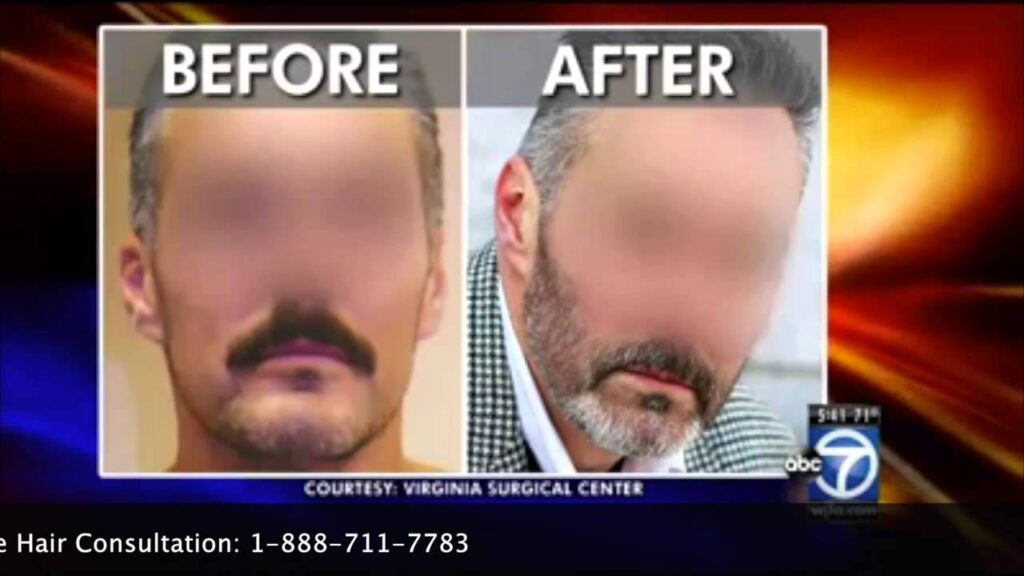
Frequently Asked Questions about Hair Transplant
Who is a suitable candidate for a hair transplant?
Suitable candidates for a hair transplant in Virginia Beach, Virginia are individuals experiencing hair loss or thinning hair due to male or female pattern baldness, trauma, or other non-scarring conditions. It is important to have sufficient donor hair in the back or sides of the head for the transplant procedure.
How long does a hair transplant procedure take?
The duration of a hair transplant procedure in Virginia Beach, Virginia can vary depending on the extent of hair loss, the number of grafts required, and the technique used. On average, hair transplant procedures can take several hours to a full day.
Is hair transplant a painful procedure?
Hair transplant procedures are typically performed under local anesthesia, which numbs the scalp and minimizes any discomfort during the procedure. Most individuals report minimal pain or discomfort during and after the procedure, which can be managed with over-the-counter pain medications if needed.
Are the results of a hair transplant permanent?
Yes, the results of a hair transplant in Virginia Beach, Virginia are considered permanent. The transplanted hair follicles are typically resistant to DHT, the hormone responsible for hair loss, and are unlikely to fall out in the future. However, it is important to note that the existing hair surrounding the transplanted hair may still be susceptible to hair loss.
What is the recovery time after a hair transplant?
The recovery time after a hair transplant procedure in Virginia Beach, Virginia varies from person to person. Most individuals can return to their regular activities within a day or two, although it’s recommended to avoid strenuous exercise and activities that may cause excessive sweating for a couple of weeks. Full recovery and optimal hair growth may take several months.
Can a hair transplant be performed on women?
Yes, hair transplants can be performed on women experiencing hair loss or thinning hair. Women’s hair loss patterns may differ from men’s, and it is important to consult with a hair transplant surgeon in Virginia Beach, Virginia who specializes in female hair restoration to determine the most suitable treatment plan.
Are there any age restrictions for a hair transplant?
There are generally no strict age restrictions for a hair transplant in Virginia Beach, Virginia. However, it is important for the hair to be stable and for the individual to have realistic expectations regarding the outcome of the procedure. A consultation with a hair transplant surgeon is the best way to determine if you are a suitable candidate.
How should I care for my transplanted hair after the procedure?
Your hair transplant surgeon in Virginia Beach, Virginia will provide you with detailed instructions on how to care for your transplanted hair after the procedure. These instructions may include guidelines on washing, styling, and protecting the transplanted area. It is important to follow these instructions to ensure proper healing and optimal hair growth.
Will the transplanted hair look natural?
Yes, the transplanted hair should look natural when performed by a skilled hair transplant surgeon in Virginia Beach, Virginia. The surgeon will take into consideration factors such as the angle, direction, and density of the transplanted hair to ensure a seamless blend with your existing hair.
Are there any alternatives to a hair transplant?
There are various alternatives to a hair transplant, depending on the cause and extent of hair loss. These alternatives may include topical medications, oral medications, laser therapy, and hairpieces. It is important to consult with a hair restoration specialist in Virginia Beach, Virginia to determine the most suitable treatment option for your specific case.
Choosing the Right Hair Transplant Surgeon in Virginia Beach Virginia
Researching Surgeon Credentials
When choosing the right hair transplant surgeon in Virginia Beach, Virginia, it is important to research their credentials. Look for surgeons who are board-certified and have specialized training and experience in hair restoration procedures.
Checking Board Certification
Board certification is an important indicator of a surgeon’s expertise and qualifications in the field of hair restoration. Look for hair transplant surgeons in Virginia Beach, Virginia who are certified by reputable medical boards.
Reviewing the Surgeon’s Experience
The experience of the hair transplant surgeon is an essential factor to consider. Look for surgeons who have extensive experience in performing hair transplant procedures and have a proven track record of successful outcomes.
Assessing the Surgeon’s Technique
Different hair transplant surgeons in Virginia Beach, Virginia may have different techniques and approaches to hair restoration. It is important to assess the surgeon’s technique and ensure that it aligns with your goals and expectations.
Viewing Before and After Photos
Before and after photos can provide valuable insights into the surgeon’s skill and the results they have achieved. Look for before and after photos from actual patients who have undergone hair transplant procedures with the surgeon you are considering.
Reading Patient Testimonials
Patient testimonials can provide valuable information about the surgeon’s skill, bedside manner, and overall patient satisfaction. Read reviews and testimonials from previous patients to get a sense of their experiences with the hair transplant surgeon in Virginia Beach, Virginia.
Considering the Surgeon’s Bedside Manner
A surgeon’s bedside manner is an important aspect of the patient experience. It is important to choose a hair transplant surgeon in Virginia Beach, Virginia who is attentive, caring, and takes the time to address your concerns and answer your questions.
Consulting with the Surgeon
Schedule a consultation with the hair transplant surgeon in Virginia Beach, Virginia to assess their compatibility and determine if they are the right fit for your needs. During the consultation, ask questions, discuss your goals, and address any concerns you may have.
Being Comfortable with the Surgeon
It is important to feel comfortable and at ease with the hair transplant surgeon in Virginia Beach, Virginia. Trust your instincts and choose a surgeon who listens to your concerns, communicates effectively, and makes you feel confident in your abilities.
Asking about Support Staff
Inquire about the support staff at the hair transplant clinic in Virginia Beach, Virginia. A skilled and experienced support team can contribute to a positive patient experience and ensure that you receive comprehensive care throughout the hair transplant process.
Maps Of Virginia Beach, Virginia
Virginia Beach, Virginia
Video Of Virginia Beach, Virginia
Oceanfront
Video Of Oceanfront Virginia Beach, Virginia
Weather in Virginia Beach, Virginia
{{current_weather.dt | momentjs( atts.date )}}
{{current_weather.temp | temp}} °{{units}}
{{day.dt | momentjs(atts.date)}}
{{day.temp | temp}} °{{day.temp_min | temp}} °{{units}}
Related Terms About Hair Transplant Virginia Beach Virginia
5 000 Grafts Hair Transplant Cost Usa, Hair Transplant Cost By State, Hair Transplant In Virginia Beach, Hair Transplant Virginia Beach, Hair Transplant Virginia Cost, How To Hair Transplant Video, Where’s The Best Place To Get A Hair Transplant







